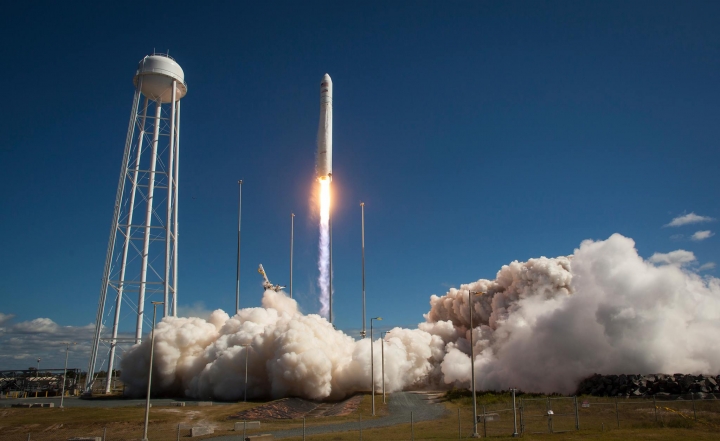Equal & Opposite Reactions: Newton's Third Law of Motion

Isaac Newton's Second Law of Motion describes what happens when an external force acts upon a massive body at rest or in uniform linear motion. What happens to the body from which that external force is being applied? That situation is described by Newton's Third Law of Motion. It states, "For every action, there is an equal and opposite reaction."
Newton published his laws of motion in 1687, in his seminal work “Philosophiæ Naturalis Principia Mathematica” (Mathematical Principles of Natural Philosophy) in which he formalized the description of how massive bodies move under the influence of external forces.
Newton expanded upon the earlier work of Galileo Galilei, who developed the first accurate laws of motion for masses, according to Greg Bothun, a physics professor at the University of Oregon. Galileo's experiments showed that all bodies accelerate at the same rate regardless of size or mass. Newton also critiqued and expanded on the work of Rene Descartes, who also published a set of laws of nature in 1644, two years after Newton was born. Descartes' laws are very similar to Newton’s first law of motion.
Pushback
Forces always occur in pairs; when one body pushes against another, the second body pushes back just as hard. For example, when you push a cart, the cart pushes back against you; when you pull on a rope, the rope pulls back against you; and when gravity pulls you down against the ground, the ground pushes up against your feet. The simplified version of this phenomenon has been expressed as, "You cannot touch without being touched."
If body A exerts a force F on body B, then body B exerts an equal and opposite force −F back on body A. The mathematical expression for this is FAB = −FBA
The subscript AB indicates that A exerts a force on B, and BA indicates that B exerts a force on A. The minus sign indicates that the forces are in opposite directions. Often FAB and FBA are referred to as the action force and the reaction force; however, the choice of which is which is completely arbitrary.
If one object is much, much more massive than the other, particularly in the case of the first object being anchored to the Earth, virtually all of the acceleration is imparted to the second object, and the acceleration of the first object can be safely ignored. For instance, if you were to plant your feet and throw a baseball to the west, you would not have to consider that you actually caused the rotation of the Earth to speed up slightly while the ball was in the air. However, if you were standing on roller skates, and you threw a bowling ball forward, you would start moving backward at a noticeable speed.
One might ask, "If the two forces are equal and opposite, why do they not cancel each other out?" Actually, in some cases they do. Consider a book resting on a table. The weight of the book pushes down on the table with a force mg, while the table pushes up on the book with an equal and opposite force. In this case, the forces cancel each other because the book does not accelerate. The reason for this is that both forces are acting on the same body, while Newton’s Third Law describes two different bodies acting on each other.
Consider a horse and a cart. The horse pulls on the cart, and the cart pulls back on the horse. The two forces are equal and opposite, so why does the cart move at all? The reason is that the horse is also exerting a force on the ground, which is external to the horse-cart system, and the ground exerts a force back on the horse-cart system causing it to accelerate.
Newton's third law in action
Rockets traveling through space encompass all three of Newton's laws of motion.
When the engines fire and propel the rocket forward, it is the result of a reaction. The engine burns fuel, which is accelerated toward the rear of the ship. This causes a force in the opposite direction to push the rocket forward. Thrusters can also be used on the sides of the rocket to make it change direction, or on the front to create a backwards force to slow the rocket down.
And if, while working on the outside of the rocket, the astronaut's rope breaks and they drift away from the rocket, they can use one of their tools, for example, to change directions and get back to the rocket. The astronaut can throw their hammer in the direction directly opposite of where they want to go. The hammer will go flying off very quickly away from the rocket and the astronaut will very slowly travel back to the rocket. This is why Newton's Third Law is considered to be the fundamental principle of rocket science.
Additional reporting by Rachel Ross, Live Science contributor.
See also:
Sign up for the Live Science daily newsletter now
Get the world’s most fascinating discoveries delivered straight to your inbox.











